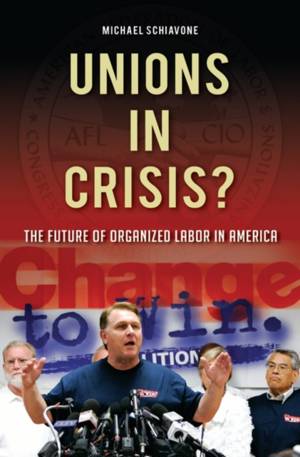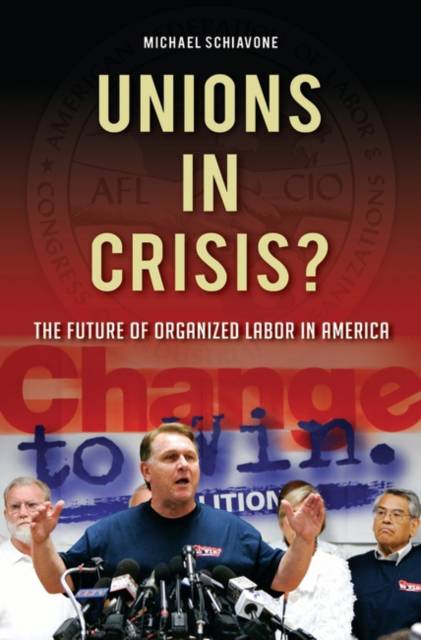
- Retrait gratuit dans votre magasin Club
- 7.000.000 titres dans notre catalogue
- Payer en toute sécurité
- Toujours un magasin près de chez vous
- Retrait gratuit dans votre magasin Club
- 7.000.000 titres dans notre catalogue
- Payer en toute sécurité
- Toujours un magasin près de chez vous
Unions in Crisis? The Future of Organized Labor in America
The Future of Organized Labor in America
Michael SchiavoneDescription
Unionism in the United States was quite successful during and after World War II, especially during the golden years of American capitalism (1947-73) as workers' wages increased quite dramatically in a number of industries. For example, average hourly earnings for workers in meatpacking rose 114% between 1950 and 1965, those in steel 102%, in rubber tires by 96%, and in manufacturing 81%. At the same time as union members' wages were increasing, union membership was declining. Yet, the American Federation of Labor-Congress of Industrial Organizations (AFL-CIO) argued that organizing new members was not a priority. By concentrating on the existing membership and bread-and-butter issues, and not organizing new members, unionism could not deal with the attack on the social contract by employers and the government beginning in the United States in the late 1970s. However, while many people are claiming that organized labor is a dinosaur, Schiavone argues that a strong union movement is needed now more than ever.
Unionism in the United States was quite successful during and after World War II, especially during the golden years of American capitalism (1947-73) as workers' wages increased quite dramatically in a number of industries. For example, average hourly earnings for workers in meatpacking rose 114% between 1950 and 1965, those in steel 102%, in rubber tires by 96%, and in manufacturing 81%. At the same time as union members' wages were increasing, union membership was declining. Yet, the American Federation of Labor-Congress of Industrial Organizations (AFL-CIO) argued that organizing new members was not a priority. By concentrating on the existing membership and bread-and-butter issues, and not organizing new members, unionism could not deal with the attack on the social contract by employers and the government beginning in the United States in the late 1970s. Following that attack, there was a significant decline in U.S. workers' wages and conditions in real terms, and there was a corresponding decline in union membership. However, while many people are claiming that organized labor is a dinosaur, Schiavone argues that a strong union movement is now needed more than ever. If unions make major changes as outlined in this book, the U.S. labor movement may regain some of its strength. By fighting for workplace (such as higher wages) and non-workplace issues (such as the fight for adequate childcare or against racism), unions in America and Canada that embraced what Schiavone calls social justice unionism have improved society for all. On purely bread-and-butter issues, these unions have achieved better collective bargaining agreements than their rival mainstream unions, as well as organizing more new workers per capita. How much strength organized labor will regain by embracing social justice unionism is uncertain, but it is a beginning.Spécifications
Parties prenantes
- Auteur(s) :
- Editeur:
Contenu
- Nombre de pages :
- 164
- Langue:
- Anglais
Caractéristiques
- EAN:
- 9780275999667
- Date de parution :
- 30-12-07
- Format:
- Livre relié
- Format numérique:
- Genaaid
- Dimensions :
- 164 mm x 240 mm
- Poids :
- 403 g







